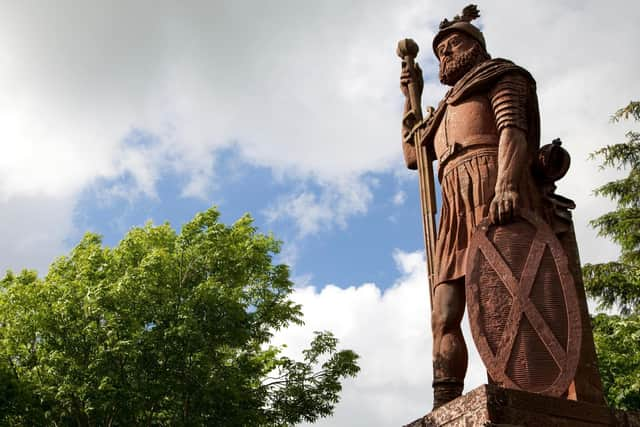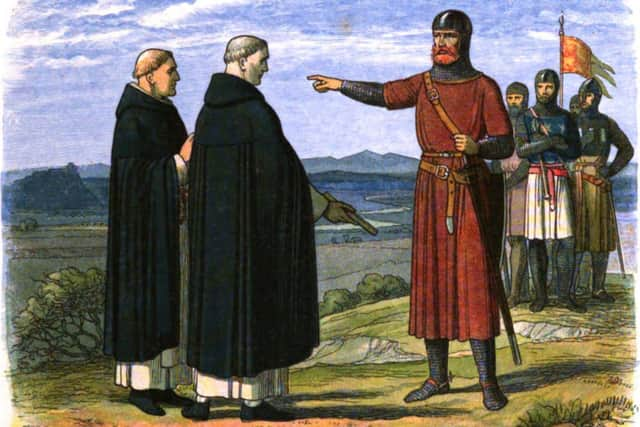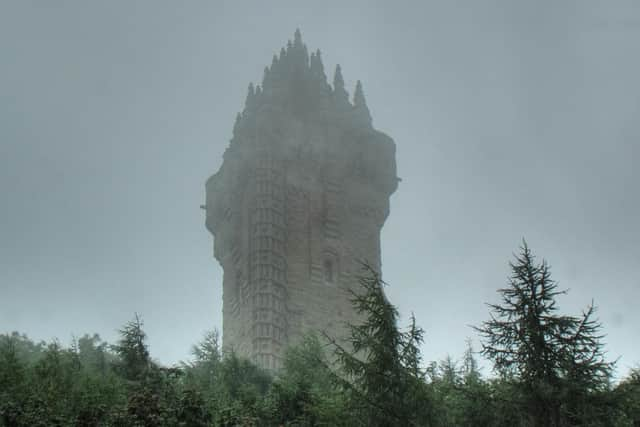William Wallace: Who was William Wallace? Why was he executed? Was Braveheart accurate?
On August 23, 1305, Sir William Wallace was executed in London for “treason” against King Edward I of England.
A fighter to the bitter end, Scotland’s national hero Sir William Wallace died protesting that it was impossible for him to be a ‘traitor’ since he had never pledged any fidelity to King Edward ‘Longshanks’.


Who was Sir William Wallace?
William Wallace was born in 1270 in Elderslie (Renfrewshire) into a gentry family. Little is known about his early life due to a lack of reliable sources.
Advertisement
Hide AdAdvertisement
Hide AdIn later life, he grew to be one of Scotland’s greatest national heroes, famous for inflicting a famous defeat against the English army at Stirling Bridge (1297) and leading the rebellion against King Edward I.
Wallace is considered a chief inspiration for Scottish resistance to King Edward I.
He is remembered as the guardian of the kingdom of Scotland during the initial years of the long yet successful struggle to free the country from England’s rule.
What is William Wallace’s story (and does ‘Braveheart’ get it right?)
When it was released in 1995, Braveheart became an instant classic and eventually won an Oscar for best film.
While it does portray the story of William Wallace and captures some basic facts accurately there are also many inaccuracies.
Overall, it shows how the young Scot killed a sheriff who was loyal to England at Lanark as revenge for the murder of his partner (Marion Braidfute).
This triggered a revolt among ordinary citizens in Scotland who had been subjugated by King Edward’s army in 1296 when his army set Berwick ablaze, killing thousands, and embarrassing Scottish lords and their armies.
Wallace then joined Northern Scotland forces led by Sir Andrew de Moray (who is not mentioned in ‘Braveheart’) and set off to confront the English.
Advertisement
Hide AdAdvertisement
Hide AdThe English King, certain of victory, had already departed to fight in Flanders, and so was absent for the pivotal defeat of his men at Stirling Bridge in 1297.
Afterwards, Wallace became the ‘Guardian of Scotland’ along with de Moray - who died from his wounds only two months later.
Wallace used this position to organise Scottish raids into England, which enraged the English king.
In 1928, however, Wallace’s army was swiftly defeated at Falkirk, as King Edward returned with a grander army that overpowered Scots with archers.
Wallace then resigned his title as ‘Guardian’ and travelled to France (Scotland’s ally at the time.)
Braveheart accurately showed that Wallace was an educated man who was fluent in Latin and French, writing letters to France to tell of Scotland’s victories and his hopes to re-enter trade.
However, Wallace did not have an affair with the French wife of future King Edward II - unlike the film’s portrayal.


How was William Wallace executed?
Upon Wallace’s return, he won success at the Battle of Roslin (1303), but the celebration would be short-lived as he was betrayed by a Scottish Knight, John de Menteith, who had sworn loyalty to King Edward.
Advertisement
Hide AdAdvertisement
Hide AdJohn de Menteith captured Wallace in 1305 and he was hauled to London in a cart.
On August 23, Wallace - before being bound by ropes and dragged through the streets of London - was executed in Smithfield by being hung, drawn and quartered.
King Edward saw to it that no worship would take place for Wallace’s body, and therefore had his head put on display at London Bridge, and the four quarters placed in Stirling, Aberdeen, Berwick and Newcastle as a threat to any other opponents.
Wallace’s dying words, according to a statement from his ‘trial’ captured in ‘Lives of Scottish Worthies’ (P.F. Tytler, 1831), were as follows:
“I can not be a traitor, for I owe him no allegiance. He is not my Sovereign; he never received my homage; and whilst life is in this persecuted body, he never shall receive it. To the other points whereof I am accused, I freely confess them all.
"As Governor of my country I have been an enemy to its enemies; I have slain the English; I have mortally opposed the English King; I have stormed and taken the towns and castles which he unjustly claimed as his own. If I or my soldiers have plundered or done injury to the houses or ministers of religion, I repent me of my sin; but it is not of Edward of England I shall ask pardon.”


Where is the Wallace Monument in Scotland?
There are many landmarks dedicated to Sir William Wallace scattered all over the country.
The National Wallace Monument, a 67m tower on a hilltop overlooking Stirling, is one of Scotland’s most distinctive landmarks and pays homage to the national hero.
Advertisement
Hide AdAdvertisement
Hide AdIt marks the location where Wallace led his troops to victory during The Battle of Stirling Bridge.
Cambuskenneth Abbey, located in the Stirling area, is alleged to be a possible location of where Wallace’s remains were buried (yet a definitive answer is not known).
Otherwise, an impressive statue of the Scottish patriot can be found in Dryburgh and several memorial stones exist all over Scotland, with one situated in Glasgow’s Necropolis.
Ultimately, Wallace’s bloody execution emboldened Scotland to pursue the cause, and the following year Robert the Bruce assumed Scotland’s throne and set the country on the road to freedom from English rule.
